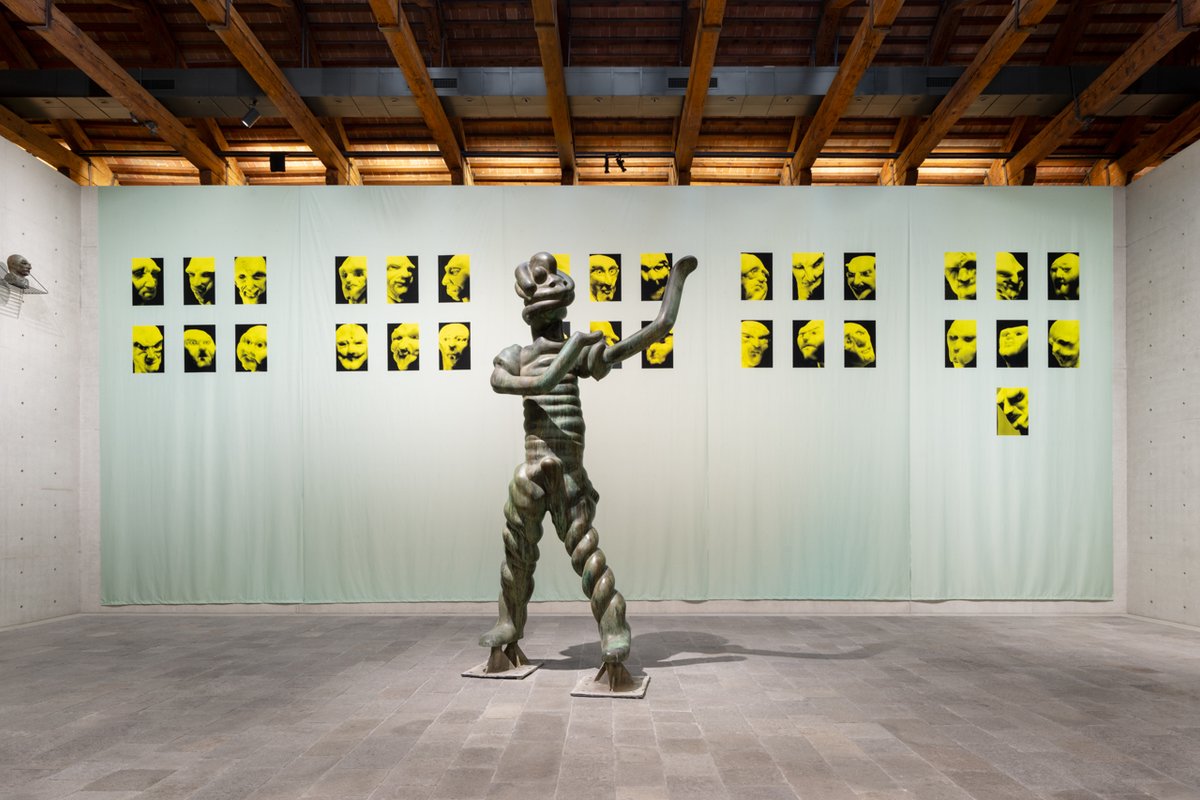The French luxury goods magnate François Pinault still makes waves in the art world with the exhibitions he oversees at his venues in Venice and his Paris space Bourse de Commerce. Two major shows opened at his Venetian locations this weekend—at Punta della Dogana, the Pinault Collection presents the first major exhibition in Italy of the established German artist Thomas Schütte (Genealogies, until 23 November), while across the Grand Canal at Palazzo Grassi, a vast show dedicated to the Franco-Italian artist Tatiana Trouvé (The Strange Life of Things, until 4 January 2026) has opened. We have selected some key works from both shows.
Thomas Schütte
“The [Schütte] exhibition highlights the unifying threads that link together the different moments in his oeuvre—the relationship he works out between drawing and sculpture, his enduring fascination for the human figure, his work’s deep rootedness in history, in art history, as well as his own,” writes François Pinault in the exhibition catalogue.
The exhibition, its co-curator Jean-Marie Gallais tells The Art Newspaper, goes beyond the Pinault Collection’s existing holding of Shütte’s sculptures to offer “something extra”. It is, he continues, “two shows in a way, mixed into one, featuring both sculptures and two-dimensional works.”
Mutter Erde (2024)
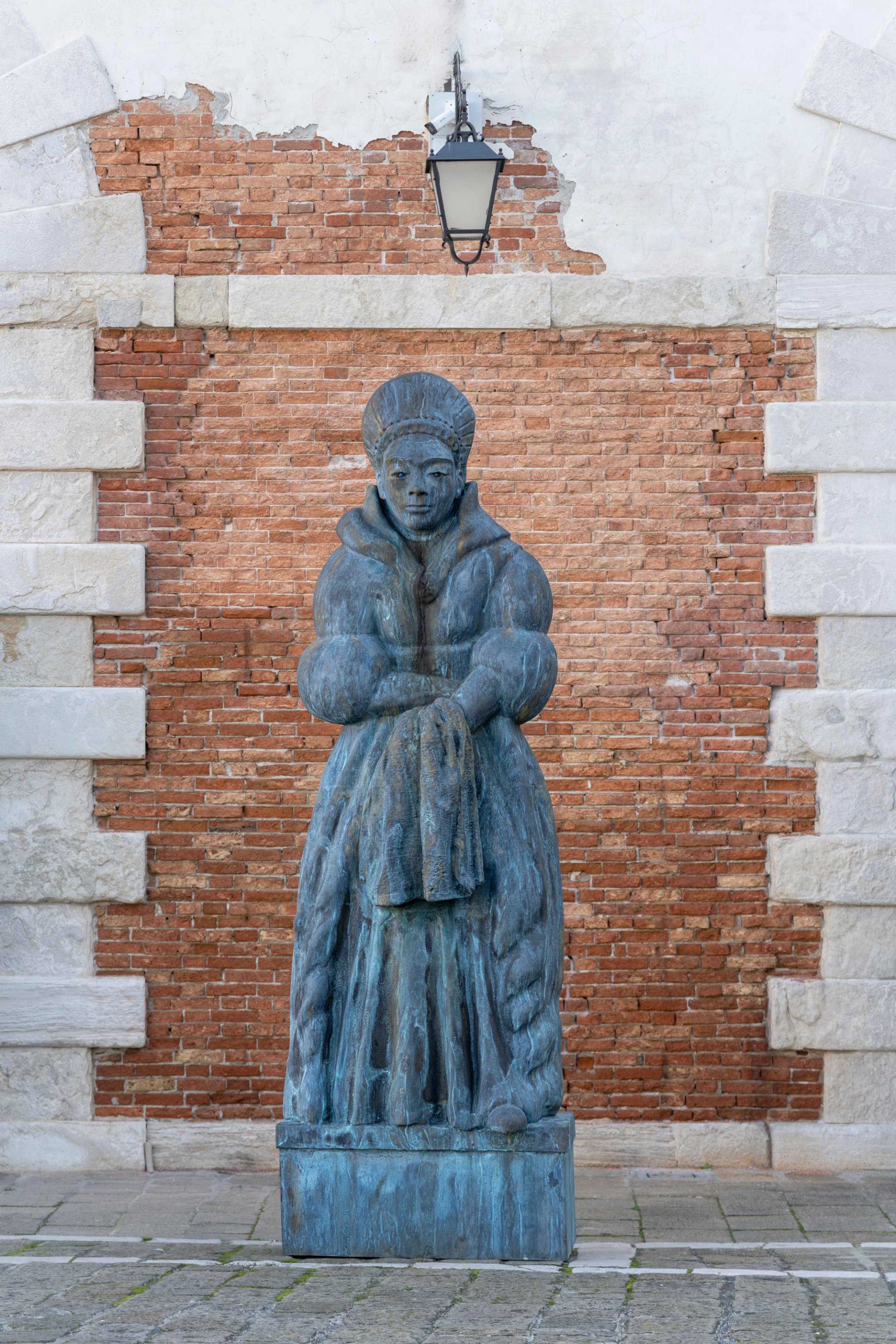
© Thomas Schütte, by SIAE 2025. Photo: Matteo De Fina © Palazzo Grassi - Pinault Collection
Outside the exhibition’s entrance, visitors will see an imposing standing female figure in bronze titled Mutter Erde (2024). “Usually the women are lying down in his works. This is the first time he has made a standing female figure,” says Gallais, who writes in the catalogue that the starting point for the work was a small figurine found in the traditional Dreikönigskuchen (a symbol of the feast day of the Epiphany).
A corresponding male figure titled Vater Staat (2010)—depicting a wizened man seemingly without arms, bedecked in a robe tied at the waist—is also included in the show, encased in a jail. “This work was shown outside Punta della Dogana more than ten years ago, Gallais says. “The pairing says a lot about duality—good and bad.”
The curator stresses that the appeal of these two archetypal quasi-hieratic sculptures lies in the difference between their solid frontal aspect and the “astonishing lightness” that emerges as you walk around them.
Drawings/watercolours (2022)
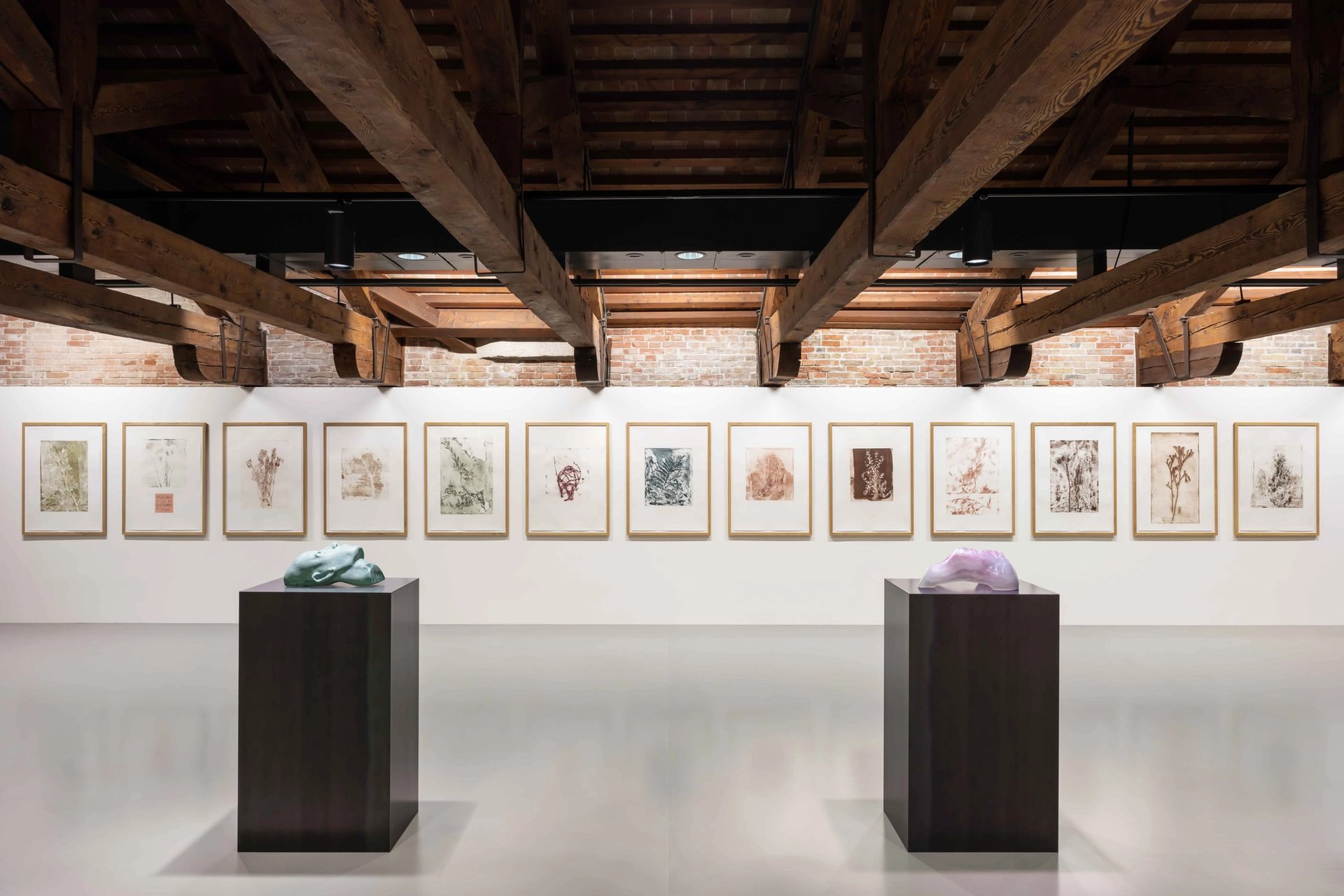
Installation view of Thomas Schütte. Genealogies featuring his works Glass: You No. 24 (2018), Glass: Me No. 33 (2018) and Fleurs pour M. Duchamp (2002) © Thomas Schütte, by SIAE 2025. Photo: Marco Cappelletti © Palazzo Grassi - Pinault Collection
A selection of watercolours on show in one of the galleries were made while Schütte was in hospital for three months in 2022. “The works show him getting inside his mind and his inner demons—his fight gather the emotions to get back to the outside world,” Gallais says. “He was hospitalised… and could do nothing but produce these works on paper at an intense, unimaginable rate,” writes Camille Morineau, the show’s co-curator. The watercolours vary in subject and tone, from flowers and cute animals to nightmarish figures and forms.
In the centre of the room, there are sculptures re-interpreting the traditional reclining woman motif, made between 1997 and 2006 (including Frau III, 2014), which are juxtaposed with the watercolours. “With these sculptures, Schütte has made an art-historical topic his own: the reclining nude woman,” writes Morineau.
“This was a relatively well-known path and I wanted to take it one step further,” said Schütte in 2004.
Tatiana Trouvé
“By offering [Trouvé] free reign to occupy all the spaces in the palazzo in whichever way she chooses, François Pinault is giving one of the most represented artists in his collection the chance to display all the facets of her artistic world,” writes Bruno Racine, the chief executive officer of the Pinault Collection, in the exhibition catalogue.
James Lingwood, the exhibition co-curator, says that Trouvé’s career has simmered over time. “Maybe it’s because she is such a singular voice—there is such a herd mentality in the art world and she has gone her own way, in her own time. Hopefully the show at the Palazzo Grassi [makes clear] the vast imaginary territory of her work,” he tells The Art Newspaper.
Hors-sol (2025)
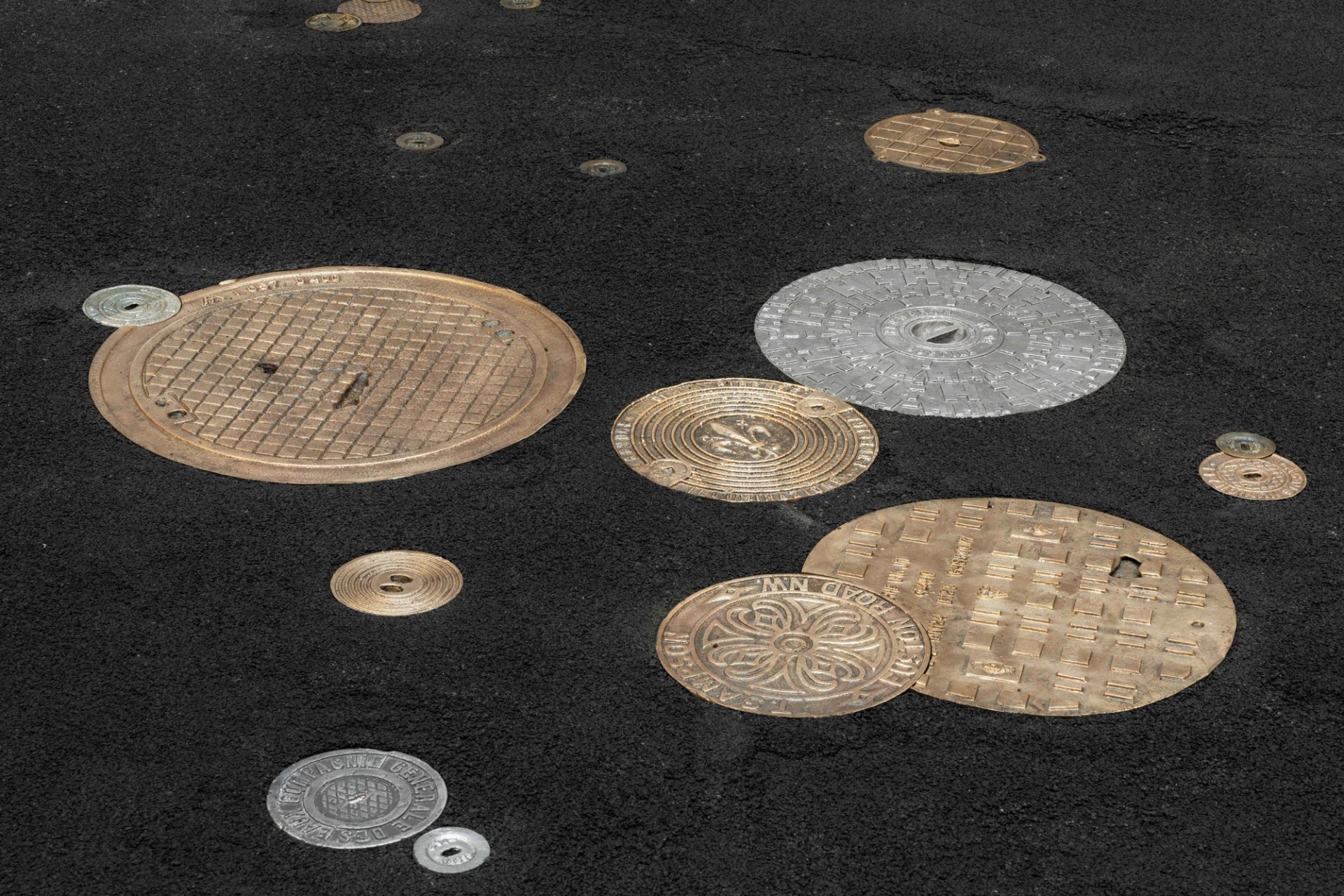
Installation view of Tatiana Trouvé, Hors-sol (2025) at Tatiana Trouvé. The Strange Life of Things at Palazzo Grassi
Photo: © Marco Cappelletti
On her studio wall, Trouvé has pinned a quote from the cultural theorist Astrida Neimanis: “The water that is in your body now was perhaps a river before, perhaps it was part of an ocean before.” Trouvé says that “the entire exhibition is linked to this dynamic, this regeneration, to displacements and transformations so what appears in one place can reappear differently elsewhere, in a cycle that is like life”.
The work in the atrium of Palazzo Grassi, Hors-sol, is linked to the phenomenon of the circulation of water; visitors walk over an asphalt floor embedded with drain covers in stone and metal as well as other elements from the street such as zebra crossings and metal covers, explains Trouvé. Viewed from above, the work is a mind-boggling patchwork of metal and asphalt, resembling a cosmos or a surreal map of Venice’s waterways.
“Trouvé’s Hors-sol, her map of the asphalt empire, is both absolutely accurate and largely useless,” writes the critic Neville Wakefield. “A map not of a place but a dérive [journey] through multiple sites and the memories layered upon them.”
The Guardian (2013-today)
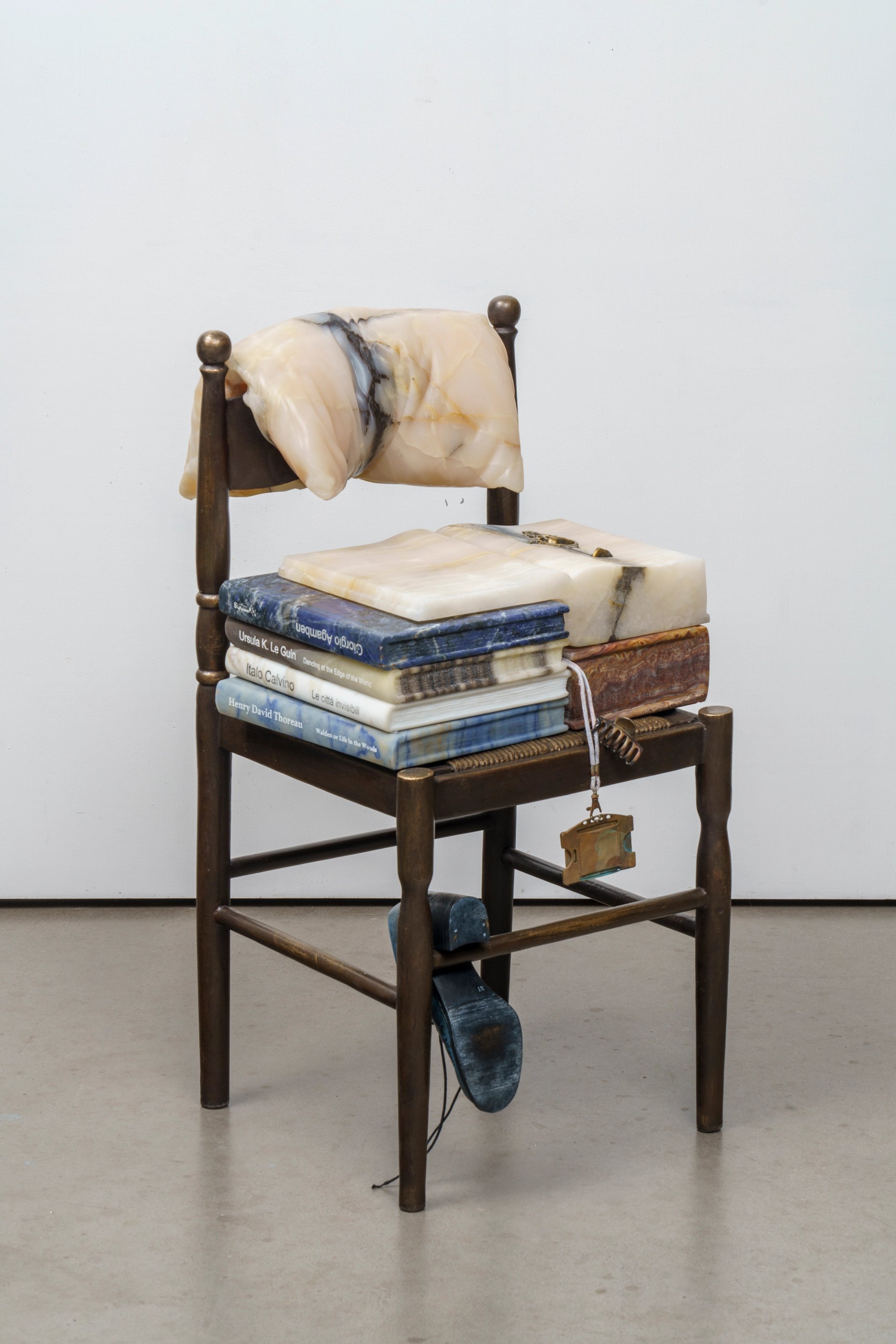
Tatiana Trouvé, The Guardian (2020)
Courtesy the artist and Gagosian. Photo: Florian Kleinefenn. © Tatiana Trouvé, by SIAE 2024
These chair sculptures—both older examples and more recent pieces—are dotted throughout the exhibition, combining disparate objects such as books made from a combination of marble and fragile plants. These works, and larger drawings featuring mountains, forests, and jungles, reflect Trouvé’s concerns regarding the climate crisis. A number of works were also created in situ at the palazzo as part of a sustainability drive.
“The alarming loss of biodiversity and its causes, global warming and the global free market economy, are more and more present in my work,” writes Trouvé. “The incredible progress of scientific knowledge—here I’m thinking of biology—is bringing a better understanding of the complexity, vulnerability, and collective intelligence of the living world just as this same world is becoming depleted, exhausted, and extinct.”
Many of the works on display represent and reflect individual, delicate ecosystems—such as a group of necklaces made up of different objects, from flowers to stones and cigarette lighters (including Montreuil, 2011). “I arranged them according to the names of the places where I’d found them, then I made a necklace for each place, stringing together the different elements I’d found there after casting them in bronze,” Trouvé says.
- Thomas Schütte. Genealogies, Palazzo Grazzi, Venice, until 23 November
- Tatiana Trouvé. The Secret Life of Things, Punta della Dogana, Venice, until 4 January 2026


